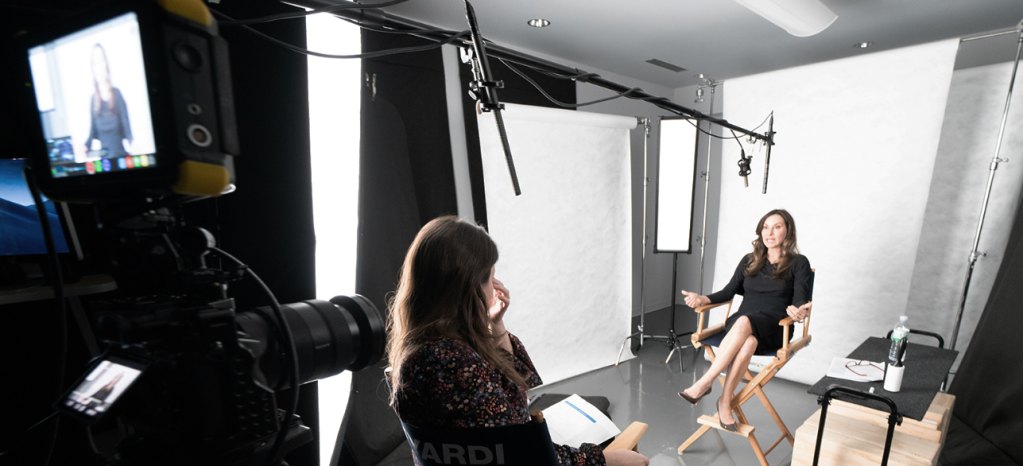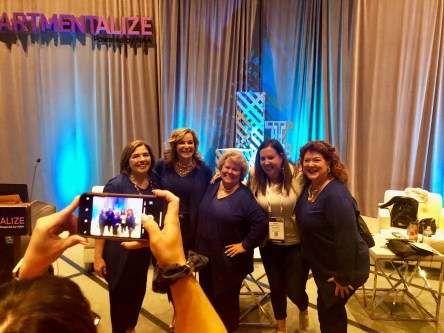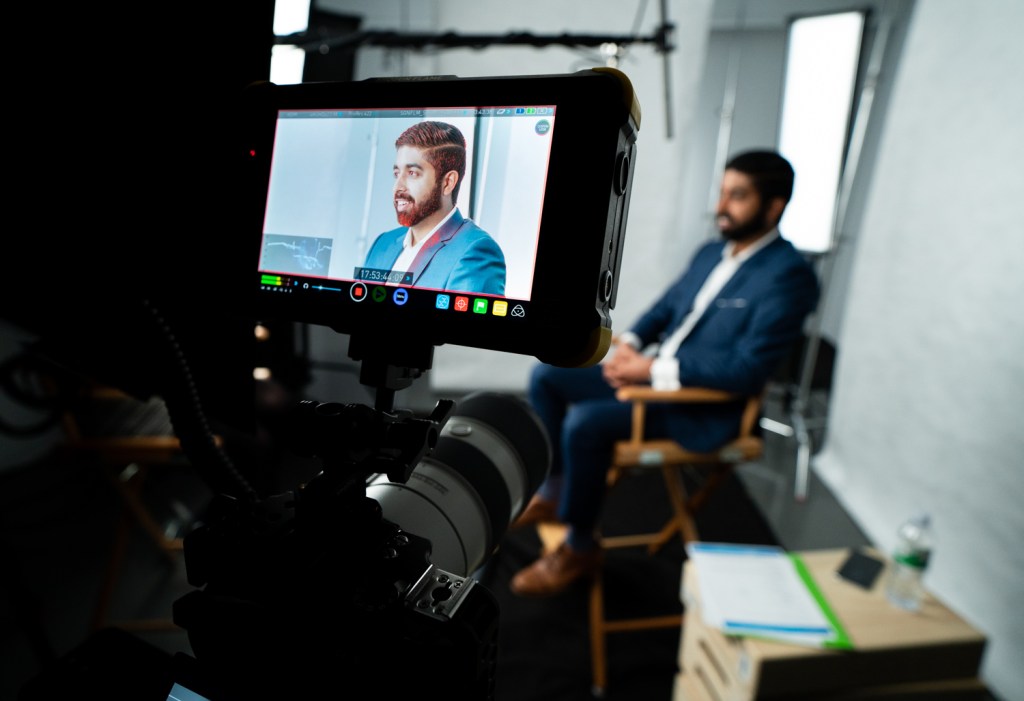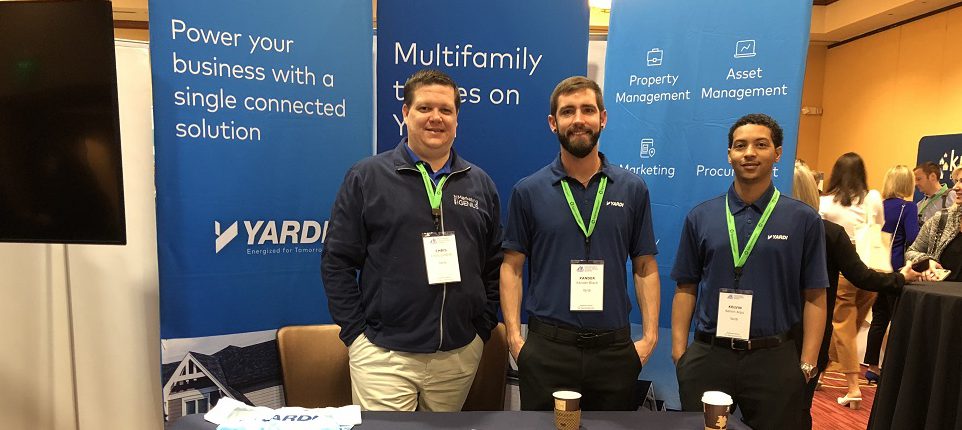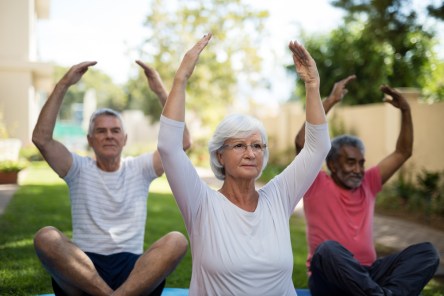Not sure what to make of your analytics page? You know analytics are important, yet you’re not comfortable interpreting the data. Demystifying data is the beginning of success! Learn how to interpret marketing data and make smarter marketing decisions. Metrics Matter Metrics help you get the most out of your marketing spend. Your marketing and leasing software should offers data on seven key areas. This information reveals viewer engagement and conversion success. Engagement metrics show how users are interacting with your content. Conversion metrics convey if users successfully follow your call to action. Engagement Page Views depict how many people have visited a particular page or post. You can use this information to gauge what interests your audience and what’s easiest to find on your sites. Pages Per Visit isolates a single person and counts the number of pages that person visits. Data is then gathered on all people visiting the site. The number you see is often an average. When you have high pages per visit, that means viewers like what they see and want to know more about your business. A low pages per visit number isn’t necessarily bad if you have high conversion metrics. The low rate could mean viewers didn’t need to be persuaded—they were sold! But more on conversion metrics later. Time on Page is, as you may have guessed, how much time a person spends viewing a page. This will vary depending on the content. Pages for floor plans may have long view times as people consider their options. A page like About Us might not, since visitors skim for basic information. Shares are most common on social media but people may also share webpages with roommates, partners, and other parties that are participating in the housing decision....
On Brand
Property branding tips & tricks
You’ve got the location, the amenities, the staff and the software you need to manage your properties. So what’s missing? Why are apartments sitting vacant and renewals at an all-time low? It might be time to reconsider your brand. In this age of customer experience, your brand is critically important. It sets customer expectations for an experience that matches. According to a recent PwC survey, customers are willing to pay as much as 16% more for a better customer experience. Adding weight to that, a Walker study found that by the year 2020, customer experience will overtake price and product as the key brand differentiator. Executed correctly, your brand will help you get (and keep) more residents, support rent increases and beat the competition. But without a cohesive brand, you can’t compete. In the words of Brenda Studt, VP / Creative Director at Excelsior Creative, an affiliate of The Excelsior Group, “If you don’t have a brand strategy, you’re building a house without a foundation. It’s really just a house of cards.” Tweet this. At TEG’s Creative Studio, Brenda helps real estate clients, both residential and commercial, ] build and transform their brands. We asked her to share some property branding tips and tricks with us to help you create better customer experiences, whether you’re working on a new lease up or rebranding an existing asset. What services does TEG’s Creative Studio provide? Brenda: We’re a boutique agency with a focus on storytelling for real estate-related business. Our services include branding, digital experience design, print design and marketing strategy. Branding is my favorite. We offer target audience analysis, muse creation, naming, copywriting and brand element creation, including colors, typography and logo design. What is a brand strategy? Brenda: I’m sure other people will define...
Home Smart Home
Must-Have Amenities
Wondering how to make your property more desirable in a competitive market? Research shows that today’s renters (especially millennials) would rather have high tech amenities than a pool or gym. And, they’ll pay more for a smart apartment that offers technology services on demand. Why? Smart apartments make life easier by keeping you connected, automating daily tasks, reducing costs through more efficient use of utilities and freeing up time for the things you really enjoy. Living in a smart apartment is like having a remote to control almost everything in your home from a phone. According to the 2018 NMHC Multifamily Disruption Report, “As real time and personalized purchasing experiences become the norm, a lifestyle-focused apartment is as important as location and layout.” Are you offering today’s most-wanted amenities? And going a step further, are you future-proofing your community with technology? Smart stuff To sign more leases with quality residents who are likely to stay for a while, you should cater to their needs on a lifestyle level by going beyond basic online services. Here are some of the most popular tech amenities that you can offer (and brag about in your marketing) now. Keyless locks Smart locks provide convenience and security with keyless entry into apartments via touchpads and mobile apps. They also log when someone enters and leaves a unit. Residents can remotely authorize access to house cleaners, dog walkers, maintenance staff and visitors. Smart locks can also alert residents whenever their door is opened — and can be connected to a security system for additional protection and peace of mind. Thermostats One of the most wanted amenities is a smart thermostat, which enables residents to control their apartment climates remotely. Since heating and cooling accounts for nearly half of a property’s...
Win at Branding
For Canadian Portfolios
Want to amplify your marketing returns and build a loyal customer base? Developing a strong brand identity can help you do both. Whether you’re an established midsized business or a burgeoning small company, it’s never too late to strengthen your brand identity. We attended the Canadian Federation of Apartment Associations conference with Sam Amin, marketing manager at Yardi, to learn more about creating a brand. What is a Brand Identity? Brand identity is more than your logo and color templates. Those are important, but your brand extends beyond what you can see and touch. At its foundation, a brand is a distinguishing mark, such a logo and other design choices. It tells us the source (company) behind a product (multifamily community). But as the “father of marketing” David Ogilvy explained it, the brand is “the intangible sum of a product’s attributes.” That means that your brand is also a set of associations connected to your business based on facts, emotions, and customers’ aspirations. How to Create Your Brand There is no need to reinvent the wheel. Amin recommends choosing from several branding formulas online to help you get started. Most formulas will require you to carefully articulate who you are and identify your customers and competitors. You’ll need to determine the type of community that you want to provide for your renters, physically and socially. As you work through each piece of the formula, be specific and authentic. Select messaging that feels natural even if (and especially if) it’s an unexplored angle for real estate. Your Brand—Everywhere, All the Time For the greatest impact, keep your brand in front of audience’s eyes. Be consistent with your messaging and steady with fresh marketing efforts that convey your messaging. “Use all your marketing tools including SEO,...
Meet Melise Balastrieri
MG Properties Group
How do you get more renters to your websites? Just ask Melise Balastrieri, vice president of marketing for MG Properties Group. Using the RentCafe Suite, Melise and her team manage the marketing for more than 20,000 apartment homes across five states. First, Melise uses RentCafe to create engaging property marketing websites. Then she drives more prospects to those websites using the expert SEO services of RENTCafé Reach. Once leads become prospects or residents, she relies on RentCafe CRM to keep them engaged. Keep reading to see how Melise makes it all work together. What is MG Properties Group’s mission? Melise: Our mission is enriching lives through better communities. And we believe that we do that with every single interaction that we have, whether it’s with a team member, our residents or our investors. What is one of your business objective in your role as vice president of marketing? Melise: A business objective that’s important to me is maximizing our use of technology in a way that affects our bottom line. That includes using it to get more leads that turn into leases. Because it’s not important just to have a lot of leads; you have to have leads that convert. How do you make SEO work for you? Melise: We use RentCafe Reach services to manage our SEO. We establish our goals based on the type of community we have, and our SEO specialist optimizes to make sure we’re attracting the leads most likely to convert. After all, we don’t just want a high quantity of leads; we’re more interested in high quality leads. RentCafe Reach provides clear and consistent SEO reporting. We can see things like website sessions, views and bounce rates to determine if we want to make adjustments. It’s been working really nicely for us. After three years of strong consecutive growth, our organic sessions were up another 21% last year. How do you improve lead capture? Melise: To capture online renters that visit our property marketing websites, we use some features in RentCafe that I think are very impactful. For instance, we encourage prospects to text us and schedule their own tours. We also use nudge marketing. These tools help us get in front of leads and give them options to contact us in ways that work for them. Our most recent data shows that, overall, our leads convert at 11%. But our self-scheduled appointment leads convert at 14% and our nudge marketing leads convert at 27%. These features are proving quite effective. How do you follow up with leads? Melise: At MG Properties Group, we automate follow-ups as much as we possibly can. Leasing teams are so busy onsite that follow-ups can get forgotten. Using follow-up tools in RentCafe CRM, we know our prospects are being contacted. We’ll use automated appointment reminders and drip emails to make sure we’re staying in touch with prospects. We invite them to call, tour and ask questions. We also use automated emails to stay in touch with our residents and secure renewals. We check in throughout their lease. As the end of their lease term nears, we express appreciation for their residency and remind them that we would love it if they continued living with us. Why do you use Yardi? Melise: What I really like about having Yardi as our property management technology provider is that most of the services we need are available in one solution. So we can deal with one company. That helps us simplify things as an organization. What marketing trends are you most excited about? Melise: I’m most excited about artificial intelligence. I think it’s super exciting and am anxious to see what it’s going to do for our industry. For example, Alexa and other digital assistants, what are they going to do for us? Will they be able to host tours, collect rent and submit service requests for our renters? (Editor’s...
Better Lead Conversion...
Yardi Senior CRM
Want to capture high quality leads and increase occupancy at your senior living property? Of course, you do! One tool from the Yardi Senior Living Suite, Senior CRM, can help you boost lead conversions in four ways. Wait, What’s CRM? CRM stands for customer relationship management. It’s software that’s used to handle interactions with prospects and mine their data. That data is then used to strengthen your understanding of the prospects so that you can better meet their needs. CRM software captures quantitative and qualitative data about your prospects’ behavior. That information can help you strategize your marketing efforts with greater precision. Robust CRM software can help you increase occupancy in four key ways. 4 Ways CRM Can Help You Increase Occupancy 1. Improve Marketing: CRM enables you to track and analyze the performance of your online marketing channel. Once you identify the most effective channels, you can tailor your marketing spend to optimize your return on investment. You’ll learn what works, what doesn’t, and where to spend your money. 2. Shorten Lead Response Times: Did you know that 64 percent of online shoppers give the first company to call them back an advantage over the competition? If you don’t respond to customers within 24 hours, they begin to question your professionalism, reports Velocify. CRM makes it easy to shorten lead response times and get an advantage over your competitors. You can automate follow-up emails and appointment reminders. Mobile-ready CRM software also enables your staff to contact leads on-the-go so that they never miss a beat. 3. Optimize Contact Strategy: With CRM, your marketing team can test and compare strategies to learn what works. Nearly 60 percent of companies use testing to optimize conversion rates. Testing is important because every company, prospect, and marketing...
5 marketing ideas
From Apartmentalize 2019
Apartmentalize 2019 features famous speakers – including Mindy Kaling and Laila Ali as the 2019 event’s closing address. But only one session had people camped out on the floor: that of the Apartment All Stars, a spirited group of four well-known apartment marketing consultants who shared the fun and creative marketing strategies they’ve recently observed nationwide. Working with a variety of multifamily clients with unique market conditions and challenges, here’s a quick list of fun apartment marketing ideas shared by Lisa Trosien, Toni Blake and Jackie Ramstedt. Kate Good, the fourth All Star, acted as moderator for the event. “This business is full of heart, and our humanity is our greatest amenity,” Blake said. For the crowd of leasing, management and operations professionals, there couldn’t have been a better reinforcement of their work’s value. Here are some creative ways that America’s apartments are attracting new residents in 2019: Pop culture themed marketing events. One community that Trosien worked with hosted a play on the hit HBO show Game of Thrones called “Game of Homes.” A combination of an apartment tour and an escape room challenge, prospects flooded to the property for something unique based on their favorite show. If you made it out of the “escape room,” your reward was a discount on move in fees. A large bump in leads and leases signed was the result of the event. Celebrating the character of your company. Multifamily managers and operators are known for their volunteerism and community-focused nature. Tell your residents! “We need to take the best part of the apartment industry, which is US, and make it a part of our marketing,” Blake said. Unique amenities focused on resident convenience. Trosien’s daughter lives in an East Coast property managed by Yardi client Bozzuto...
Spring Cleaning
Social Media Edition
As is the seasonal custom, spring cleaning is a great way to start summer with a fresh slate. We detail five ways to “spring clean” your social media profiles. Keep reading for easy strategies you can implement now! Refresh your graphics Spring is the perfect time to switch out your cover photos and profile avatars. Have new branding to share? Do you have property themes for the spring or summer? Even if you don’t have a dedicated design team, free graphic design platforms like Canva offer a low-cost way to update your social media channels, presentations, brochures and logos. Update your contact information It sounds basic enough, but updated contact information is an easy way to ensure prospects and customers can connect with you. Contact information checklist: Phone number Email Website Physical location address Display other social media channels Add spring and summer hours When was the last time you updated your hours on your social media accounts? Especially if your property or office features extended hours in the spring or summer, adding hours of operation can help you communicate when people can reach you. Do a quick content audit Conducting a social media audit is a smart way to analyze your current social media marketing efforts. Each social media platform offers analytics on individual post performance. The Insights tab on Facebook and Instagram, and Analytics tab on LinkedIn and Twitter, provide ways to assess your content. Questions to ask: In the past three months, which posts had the highest engagement? Which posts had the lowest engagement? In the past three months, what post types performed best? (example: video, image, link) Are you hitting your social media goals? If not, how can you use this social media data to inform your strategy moving forward?...
CRM for Senior Living...
Marketing Supercharged
With more senior living options than ever, competition is fierce for would-be residents. Communities must set themselves apart to attract customers – and the most effective way to do that is through online marketing. It might come as a surprise, but Baby Boomers spend more time on the internet than Millennials, with 31% reporting they use their laptop, tablet or phone more than 15 hours per week. So how do senior living operators get the biggest bang for their buck? The answer is simple: CRM. What is CRM, exactly, and how does it help cut through a crowded marketplace to grow occupancy? First, a definition: CRM stands for customer relationship management. It is technology used to oversee interactions with potential clients with the goal of improving relationships through use of data. CRM software captures both qualitative and quantitative data across various channels and stores it in one centralized location to paint a holistic view of prospects, surfacing insights to make strategic decisions and optimize your marketing. This increased visibility boosts the effectiveness of your outreach. And because CRM allows you to track and analyze the performance of various online marketing vehicles to see where your dollars are working hardest. you can decide which campaign types are most meaningful for your business. Here are just a few of the ways CRM helps optimize marketing spend to maximize ROI. Tailor Messaging The first step of developing an effective marketing effort is identifying your audience and what types of marketing content they respond to. CRM systems like Yardi Senior CRM allow you see prospects’ interactions and identify which channels and messages are most compelling. If consumers are ignoring display ads but opening your emails, you can dial down advertising spend and invest more resources in refining your...
Meet Arun Das
Marketing Genius, Pangea Properties
Say hello to Arun Das, head of marketing and technology at Pangea Properties in Chicago. Arun is featured in Yardi’s new Real Estate Questions Answered series, a fantastic way to find out about how real estate professionals use Yardi software to solve problems in real life. Arun’s role at Pangea means that he’s a fluent in marketing technology. He’s also a genuinely nice person. We recently talked with Arun about the online renter experience, website optimization and conversion rates – and peanut butter! Keep reading to learn a little bit about Arun and how you can apply what he’s learned from his marketing initiatives at Pangea to your own properties. Can you tell us a little more about Pangea? A: Founded in 2008, Pangea Properties is a private real estate investment trust (REIT). We have more than 500 buildings and 12,000 apartment units spread across Chicago, Indianapolis and Baltimore. Pangea’s mission is to provide service, value and care, one resident at a time. We’re also extremely passionate about giving back to the communities in which we operate. What are one or two marketing objectives you’ve been addressing lately? A: Over the past year, we’ve focused on a variety of process enhancements. Specifically, we’ve been working to streamline resident communications and improve our overall application experience for prospective residents. How does Yardi technology help you accomplish your goals? A: Yardi’s full stack software solution allows our RentCafe, RentCafe CRM and Voyager instances to seamlessly communicate with one another. That lets us use robust Yardi resident communication tools without having to transfer information between different software platforms. On the prospect side, the application and screening tools give us the ability to collect custom information, which then provides us a better underwriting process and overall a better application experience for our residents. The seamless online application process also saves our staff a lot of time – we estimate we saved around 150,000 hours over the last year. What would you personally like to achieve in your role at Pangea? A: I would love to continue having a positive impact on the lives of our residents as well as positively representing the communities and neighborhoods we serve. I’m passionate about Pangea Cares, our corporate social responsibility program designed to give back to our Chicago communities. (Watch a video about the impact of Pangea Cares and how it helps the company connect with the community.) Our staff is encouraged to take time to volunteer for Pangea Cares’ community efforts. They might use it to create marketing materials, put together baskets for Thanksgiving deliveries or hand out back-to-school supplies to area kids. So far, we’ve donated around 7,700 volunteer hours, and I’m personally invested in the continued success of this initiative. What marketing trend are you currently most excited about? A: I’m excited about artificial intelligence. There are starting to be services out there that can take over your property tours or your call center or your website. We’re years away from a product that will match our level of service, but things are coming, and I think this could really transform the industry. Tell us something interesting about you that would surprise someone. A: Something interesting about me that would surprise pretty much everyone is that I absolutely hate peanut butter. I think it’s the most disgusting condiment ever, and I catch a lot of flak for it daily. Watch Arun’s real estate questions answered videos and find more answers to real estate technology questions on the Real Estate Questions Answered...
Social Strategies for 2019
Multifamily Social Media Summit
In early January, Yardi returned as an exhibitor and sponsor of the Multifamily Social Media Summit (MFSMS) in Napa, California. The annual event provided a space for multifamily professionals to learn about the latest trends in social media marketing. Keep reading for conference takeaways and ideas to inform your 2019 marketing strategy. The Loyalty Loop Social media marketing has changed dramatically over the past five years. Each year, there seems to be a new platform, hack or algorithm shift to think about. At times, attracting and keeping your audience’s attention can be daunting. Andrew Davis, best-selling author and marketing guru, kicked off the MFSMS with a keynote focused on the new customer journey. The Loyalty Loop, as Davis describes it, “uses the tenants and prospects you have to attract the tenants you want.” Harnessing the power of intentional content marketing and experiential customer care, Davis challenged attendees to rethink the sales funnel. Want to inspire loyalty in your customer base? “You must pledge to be different,” Davis said. Questions to ask yourself: How does your community or company offer a unique experience? What inspires your tenants to talk about the place they live? Are you providing content that is helpful to your audience? “We don’t rent homes, we sell experiences!” says Davis. Making the renter experience great from the start will foster positive, long-lasting relationships with your customers. Beat the Algorithms Multifamily marketers are competing with cluttered social networks and everchanging algorithms. During the session “Staying Ahead of the Social Algorithm,” Dylan Sellberg, Product Manager at HubSpot, discussed the latest algorithm changes. His top tips to beat the algorithm: On Facebook, create and share highly visual content. Using new mediums, such as 3D photos, 360-degree videos and Facebook Live, are incentivized by Facebook, so being an early adopter is a smart move. Instagram highlights your property’s uniqueness in a highly visual format. Investing in quality photography will benefit your brand. Consider hiring a professional or purchasing equipment to create high-quality photos. Not only do high-quality photos and video perform better, but they also provide a glimpse of the experiences offered at your community. Video is Here to Stay “Video is the fastest growing medium in the digital landscape,” shared Jamie Gorski, Chief Marketing Officer at Bozzuto. According to data, 80% of global internet traffic will be attributed to video by 2020. Gorski, together with Elyse Cosgrove, Founder of Elysees Eye Productions, explored video trends during the session “Video Marketing in 2019: What Should Be Your Focus?” CEO features, customer stories and behind-the-scenes videos were the most engaging videos of last year. As we get into 2019, they recommended embracing new delivery methods. New mediums, like 360-degree videos, augmented reality and virtual reality, can help your brand stand out from the competition. “Use it now and you’ll be ahead of the game,” said Gorski. How will you use social media in your 2019 marketing strategy? Learn how Yardi can take your social media marketing to the next level this...
Attracting + Retaining Talent
Senior Living
Talent scouting and retention are a hot topic in the senior living industry. Organizations struggle to attract, identify, and retain talent. Without a solution, the industry is poorly equipped to provide quality care. Existing employees are overworked, and residents may wait underserved. The results can be fatal: a European study of 260,000 nurses reveals that increasing a nurse’s workload by one case could increase mortality risk by 7 percent within 30 days of admission. Tactics to improve recruitment and retention are crucial. A Growing Problem According to the American Association of Colleges of Nursing, 53 percent of senior care providers say that “insufficient numbers of quality applicants” is their primary problem. Once talent comes onboard, retention becomes a hurdle. The industry is challenged by a 50 percent turnover rate among direct-care staff. Without drastic changes, the industry will not be able to keep up with growth forecasts. Improved healthcare and living conditions has extended lifespans. There are more Americans living over the age of 65 now than at any other point in history. By 2030, the senior population will increase by 75 percent. The workforce needs to at least double to meet growing demand. Questions to Identify Practical Solutions Reexamining your current protocols for attracting and retaining talent may help you identify problems. The questions below can help you get started: What does your online reputation tell prospects about you? Pretend to be a prospect. Search for your organization online. Consider housing reviews, employer reviews, and social media commentary. What impression do you receive? About 84 percent of organizations use social media to recruit new hires. Are you among them? You may need to revamp your online presence. Begin by addressing the most pressing concerns to arise in the past 30 days. Then work to maintain your online reputation as new content arises. Can qualified talent quickly find your job posting and easily apply? Hone recruitment by focusing on healthcare job listing sites. This approach narrows the pool more quickly than a general online job board. Also consider a referral incentive for current employees. Nurses, for example, have completed specialized training. They may know other qualified graduates in search of work. Do you offer an appealing employee experience? The employee experience is what occurs when employees walk through the door of your community How employees feel about their workplace and management are major factors for retention. Consider: Are employees given clear guidelines for their mission? Do they have a clear career trajectory? Can they easily access a formal and efficient way to voice their concerns and suggestions? Do employees receive tools to help them manage stress, such as free wellness programs and classes? Does the current staff lounge encourage teammates to rest and recharge for the next segment of their shift? Teammates that are balanced, motivated, and supported can provide the best care—and build a respected brand. Does your retention plan realistically address the needs of employees? If you don’t know, ask. You may be surprised by what you find. For example, you may think a hip staff lounge would entice and retain young talent. What you may find is that “56 percent of Millennials said they would take a pay cut to work somewhere that is positively changing the world.” Learn what staff wants before overhauling your retention strategy. Do current teammates feel appreciated? When teammates feel undervalued, they’re likely to take their talents elsewhere. Defeat turnover by creating an employee recognition program. Monthly kudos, annual awards and perks show talent that you appreciate their efforts and value their loyalty. Data from the Bureau of Labor Statistics suggests that healthcare is one of the largest and fastest growing fields in the nation. The numbers are encouraging. As organizations refine their plans to attract, identify, and retain talent, we can turn the tide on the senior care...
Word of Mouth Isn’t Dead...
Benefits for Businesses
Word of mouth marketing (WOMM) is an old hat that has learned new tricks. Nielsen reports that 92 percent of consumers believe recommendations from friends and family over all forms of advertising. A study by The American Marketing Association adds that 64 percent of marketing executives believe that word of mouth is the most effective form of marketing. So why have only six percent of marketers mastered the new potential WOMM? WOMM with Purpose Jay Baer’s latest book, “Talk Triggers,” explores how businesses can capitalize on WOMM. His first tip is to strategize. Too often, businesses rely on happenstance, like tripping on a rock and noticing that it’s a chunk of gold. But by intentionally creating word of mouth opportunities, you get people to talk on purpose and control the message. Next, Baer recommends repeatable strategies. One-hit-wonders don’t build a brand. What can you do, and continue to do, to keep customers talking? Doubletree’s free cookie program is a prime example of intentional, repeatable WOMM. Every check-in and free cookie is a WOMM opportunity. More than 25 years later, the free cookies still generate buzz. Learn from Sprint’s Mistake Lastly, Baer encourages businesses to be unique. Sprint demonstrates how sameness backfires. Sprint hired actor Paul Marcarelli, formerly of the Verizon “Can you hear me now?” campaign. Verizon’s campaign, which lasted for nearly a decade, was a huge success. Sprint’s attempt at piggy backing on that success only sort of worked. Sprint spokesperson David Tovar told the New York Times that the new commercial was viewed 14 million times on YouTube. Nearly 1,000 articles (including this one) mention Marcarelli’s brand switch. Sprint’s Marcarelli stunt stimulated more than 3 billion impressions but the conversation wasn’t exactly good. Few consumers talked about Sprint’s improved network. People wanted...
Snapchat for Student Housing
Attract new residents
Of the top five most popular social media apps, Snapchat is the most cryptic to navigate and has the shortest content lifespan. Those are two reasons why young adults love Snapchat, and your student housing community can benefit from loving it, too. So Snapchat…Who Cares? Snapchat doesn’t offer traditional menus for navigation. It’s all about exploration and being in-the-know. The small nuggets of content posted by users can disappear in a fewer than 24 hours. If your student housing brand uses Snapchat, you’re demonstrating that you are relevant, timely, and engaging. Your prowess can place you in front of the eyes of more than 130 million students. About 77 percent of college students use Snapchat and they use it often. Nearly 80 percent of users log in into Snapchat daily. On average, they send 34 snaps each day. With your content in the midst of the action, you can make major impressions. How to Use Snapchat for Student Housing The content in Snapchat has a very short lifespan. As such, your posted content may have a quick expiration date. Use snaps to explore limited-time offers at your property. Maybe you take Snapchatters on a tour of an available unit. Perhaps you use the platform to market a move-in promotion. Snapchat provides an opportunity to highlight content with a short shelf life. Snaps are also great for “setting the scene,” depicting what it’s like to live in your neighborhood. Create short videos and pictures of daily life in the community. Excerpts of a resident pool party show the potential for fun and new friends. Residents enjoying sunset on the rooftop deck show to opportunities to relax amidst a hectic class schedule. Take residents behind the scenes of your community through Snaps. Such snaps can be an interesting way to showcase updates at the community that benefit residents. Think of big ticket items like pool deck upgrades as well as small things like seasonal flower installations. Spice it up with a quick Q&A with the crew. Residents may like getting to know people they may see in their community. Community events are perfect Snapchat fodder, especially when you have high attendance. Take advantage of the “crowd surf” feature, which stitches together multiple snaps recorded by users to create one continuous video at events. Let Users Find You Unlike a Facebook business page, your Snapchat profile provides minimal information about your student housing community. In order for prospects to find you, be sure to use geofilters on some of your posts. This creates a way for viewers to identify your location. When residents see your geofilter, they may be encouraged to use it as well. Geotags quickly and easily broaden your marketing reach. Learn more about smart managing and marketing of your community with the Yardi Student Housing...
Increasing Conversions...
Landing Pages Part II
In last week’s post, we answered your basic questions about landing pages: What is a landing page? Why is it powerful? What should it include? But landing pages are tricky tools. What they should exclude is just as important as what they should include. When landing pages include undesirable features, your conversion rate suffers. That means that you sabotage your return on investment, paying more for less. The pointers below will help you craft a landing page that fulfills its potential. What should my landing page exclude? Landing pages aren’t like other pages on your website. More information and options is not better! The features below decrease the likelihood of conversion. Exclude them from your landing pages. Navigation links The menu on your website or any other navigation links should be hidden from view. Remember, prospects reach your landing page through an ad with a specific purpose. Presenting other options will be confusing at best. At worst, the links will navigate them away from your offer. Multiple calls-to-action (CTA) If a prospect clicked your ad for a studio apartment deal, there should be a single CTA for studio apartments. Other CTAs or even social media links are a distraction, resulting in a lower conversion rate. Presenting multiple CTAs on a landing page activates Hick’s law. Increasing the number of options increases the time needed to make a decision. That extra effort and time decreases the likelihood of a successful conversion. If you’d like to offer multiple deals, create multiple landing pages for each one. There is no such thing as too many landing pages! Each page offers a tailored user experience. Long-winded copy When it comes to copy, or text, stick to details about the benefits of your offer. Prospects have short attention spans....
Increase Conversions
Master the Landing Page
If your pay-per-click (PPC) campaign leads prospects to your home page, you’re missing out on conversions. Creating a landing page for your paid ads is a proven way to increase your conversion rate. What is a landing page? A landing page is not built into your website through the navigation menu. It is a stand-alone page that prospects land on after clicking your paid ad. The sole purpose of a landing page is to get your prospects to take action. The landing page should provide a quick summary of what you have to offer. It should then direct the prospect on how to take advantage of the offer (the conversion). That’s it. Why are landing pages so powerful? Organizations that use landing pages experience more conversions. Research reveals that more landing pages lead to more conversions. Paid ads placed in internet searches, emails, or social media campaigns should guide prospects to a landing page. In fact, landing pages help ads achieve a greater return on investment. They also improve your site’s quality score. Without a landing page, your cost per lead rises and your conversion rate lowers. You’ll pay more for less business! What should my landing page include? Keep your landing page informative yet simple. Landing page essentials include: Your logo Quickly reestablish your brand with by placing your logo near the top of the landing page. A captivating headline A solid headline does two things. First, it confirms that prospects have arrived to the correct page after clicking your ad. You can achieve this by using the same language in the headline as you did in the ad. Secondly, the headline entices the prospects to read more and take action. Copy and media that mimics the language of the ad Your copy...
5 Easy Tips
For Better Property Photos
Commercial property photos are notoriously unimaginative. Prospects have grown accustomed to mundane shots of empty spaces. But what if you offered something more interesting? Your property will gain the competitive advantage. Below are five tips for better commercial property photography that will help you stand apart from the crowd. Show Interactions, Not Spaces All commercial spaces have a ceiling, walls, and a floor. Skip the boring space photos. Instead, showcase interactions and operations within the space. Here are a few examples: Accentuate the room’s natural light by depicting an employee as she waters thriving, indoor plants near large windows Capture a team effortlessly unloading packages on the spacious and updated loading dock Emphasize your rapid WiFi availability with teams working simultaneously on their laptops and mobile devices Highlight your services by showing a vendor removing a recycling bin from the site Stage Like Sales Depend on It! As you’ve gathered by now, staging a commercial space may require models and supplies. It could be worthwhile to invest in office furniture so that you can stage spaces now and in the future. Otherwise, you can find models, photographers, and props on sites like MuseCube, Model Mayhem, and OneSource Talent. Commercial tenants want to see the potential of the space that you offer. If live staging is cost prohibitive, consider virtual staging. Virtual “renovations” are a great way to show potential uses for the space. Showcase Versatility Think beyond expected uses of the unit. Consider creative approaches for the space, such as coworking and CrossFit. By thinking outside of the box, you may attract a prospect that had not previously considered your site. Location, Location, Location Your property’s neighborhood may be a noteworthy part of your marketing efforts. Are there restaurants nearby that tenants may enjoy...
YMF New Orleans
3 Quick Takeaways
The Yardi Marketing Forum took New Orleans by storm earlier this month. This sold-out event drew top multifamily property marketers from across the country to The Big Easy for three days of fun, education and networking. View the photo album for a behind-the-scenes look. Attendees enjoyed focused attention from Yardi team members and exclusive guest speaker presentations. Google’s session on “The Age of Assistance” gave the audience three tips for winning in today’s competitive search environment: be there, be quick and be useful. Keep reading to see how you can apply these marketing takeaways from the forum to your property management business today. Be There You can’t win clicks if your customers can’t find you. Ben Waltzer from Google Fiber shared that today’s consumers are “more curious, more demanding and more impatient than ever before.” In fact, 15% of Google searches today are ones they’ve never seen before. Co-presenter Jeff Kirschenmann asserted that searchers “expect us to deliver relevant results at the right time.” Do you have a plan in place convert prospects by connecting during moments of intent? A successful marketing strategy includes being present at every stage of the customer journey. This might include SEO for long tail searches, paid ads for different demographics and nudge marketing that spurs website wafflers into action, as well as a healthy presence on review sites and social media platforms. If that sounds like a lot and you just don’t have the time or staff to handle it all, you might want to consider the advanced property marketing services of RENTCafé Reach. Be Quick Filmmaker Gavin Garrison’s talk focused on the emotional impact of storytelling – not just for video but for all forms of marketing. He spoke about using the power of relatable emotion to...
Purpose-Driven Marketing...
For senior living
Does your company have a purpose? It might seem like a trick question, but it’s not. The concept of purpose has seeped into brand-building conversations thanks in large part to Jonathan Mildenhall, one of the world’s most influential CMOs, who claims his success at super brands like Coca-Cola and Airbnb are a result of the power of purpose. In this post, we’ll examine what purpose-driven marketing is and how it can help differentiate and propel your senior living brand. What is purpose-driven marketing—and how does it relate to senior living? Purpose-driven marketing is, as Mildenhall describes it, “a compelling brand purpose that transcends the business model and reaches into culture.” It’s looking beyond day-to-day transactions and committing your business, publicly, to a broader social mission. In the senior living industry, most companies are not operating on a global scale. They’re serving communities, and they thrive only when they create bonds with residents and locals. For this reason, operating with purpose is a competitive necessity. Purpose drives performance The concept of creating a purpose for your business can seem like marketing fluff, but purpose-driven companies outperform competitors financially, creating much more shareholder value. They also attract and retain top talent more effectively, a struggle for many senior living operators. Building a philosophy—one employees can articulate in just a couple of sentences—is even more important in today’s climate, where Millennials, who value socially-responsible brands, comprise the largest segment of America’s workforce. Let creativity and humanity be your guide In order to effectively bring about change and find your company’s purpose, look at things creatively. “Bring your eight-year-old self to work,” says Mildenhall. “Geek out like it’s your first time playing Legos.” Seeing things as a child would breeds curiosity. It allows you to view things with...
Piggyback Marketing
7 Dos and Don’ts
In a perfect world, you’d create all of your own content. It would all go viral. You’d burst with success. All the content creation would all be completed in less than an hour per week. Unfortunately, that’s not how life works. You likely excel in real estate, not content creation. Time minimizes how much original content that you create. Sometimes you have difficulty getting readers to engage with your posts. Piggyback marketing may be able to help. Piggyback marketing describes the use of recycled, trending content on your social media feeds and blog. It allows users to borrow and benefit from the popularity of someone else’s content. Sometimes piggybacking is sharing a video, meme, or post. Other times, it’s referring to a trend within your original content. There are advantages and disadvantages to piggyback marketing. When used wisely, it can build engagement and improve the reputation of your brand. When abused, it can erode trust and water-down your brand identity. The dos and don’ts listed below will help you use viral piggybacking to your advantage. DO supplement your content with piggyback marketing.Viral piggybacking of relevant content allows you to tap into what’s already successful. There is no need to reinvent the wheel, which is great when you feel creator’s block or you’re pressed for time. DON’T rely on piggybacking. Limit how often you use others’ content to market your brand. Keep the percent of borrowed content in the single digits compared to your original content. There is no substitute for content that reflects your brand, your objectives, and the unique tastes of your audience. DO stick to content that is relevant to your brand, market, and clients’ interests. Use tools such as Buzzsumo and Scoop.It to identify relevant content. Those tools allow you to...





